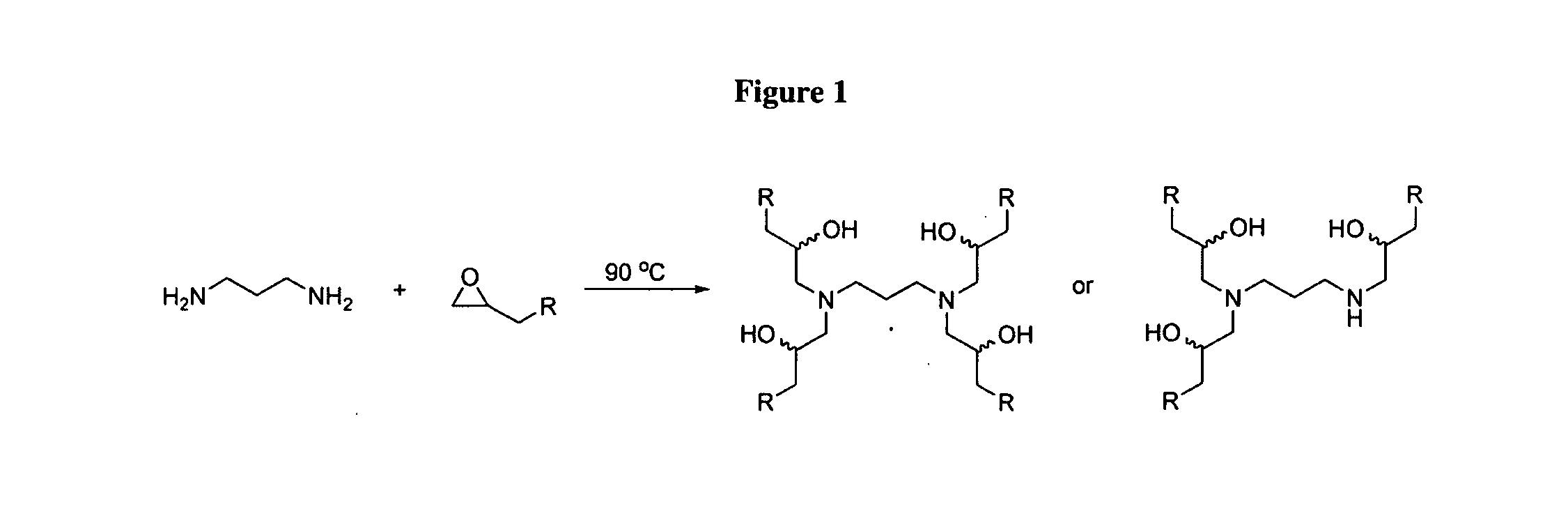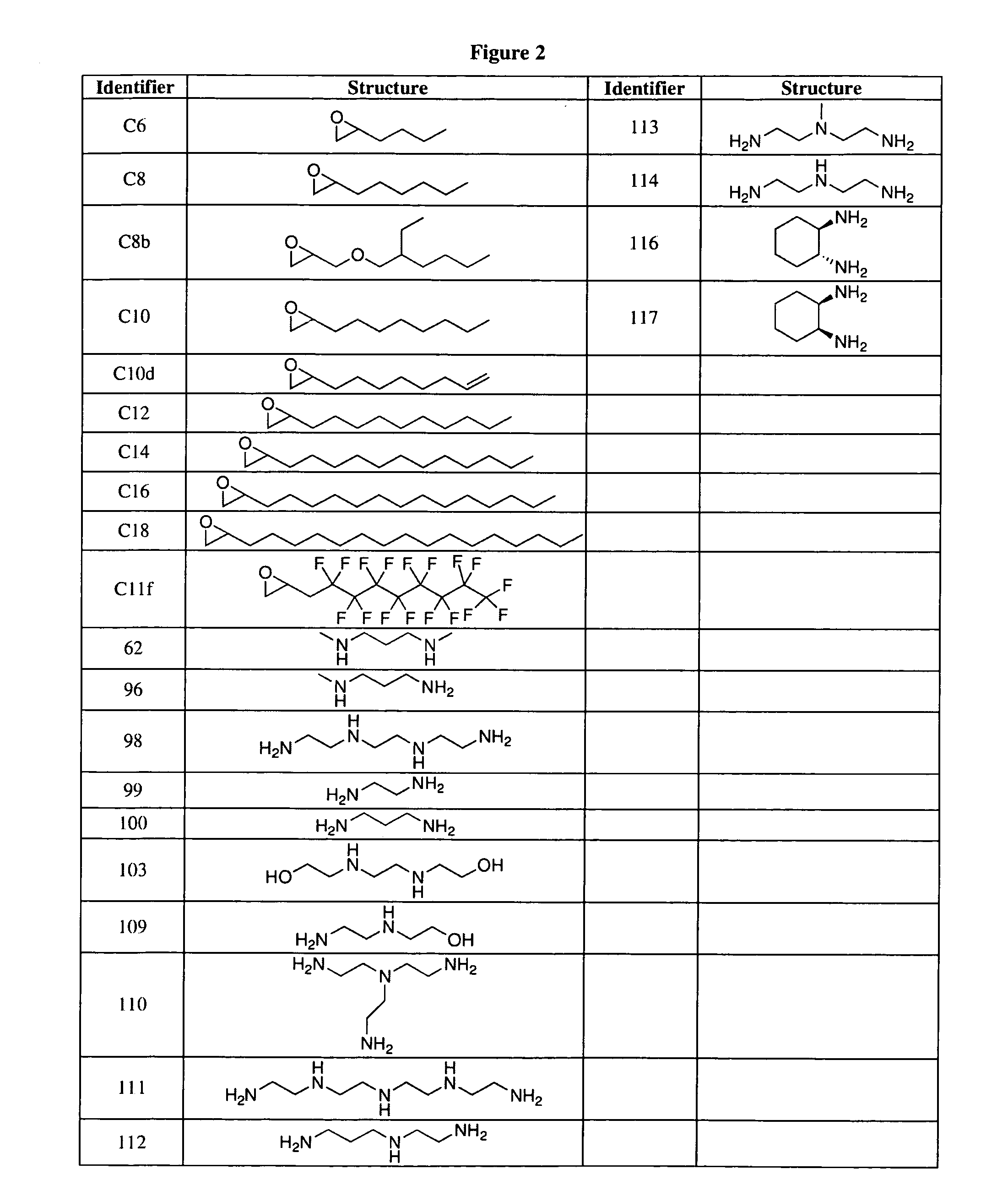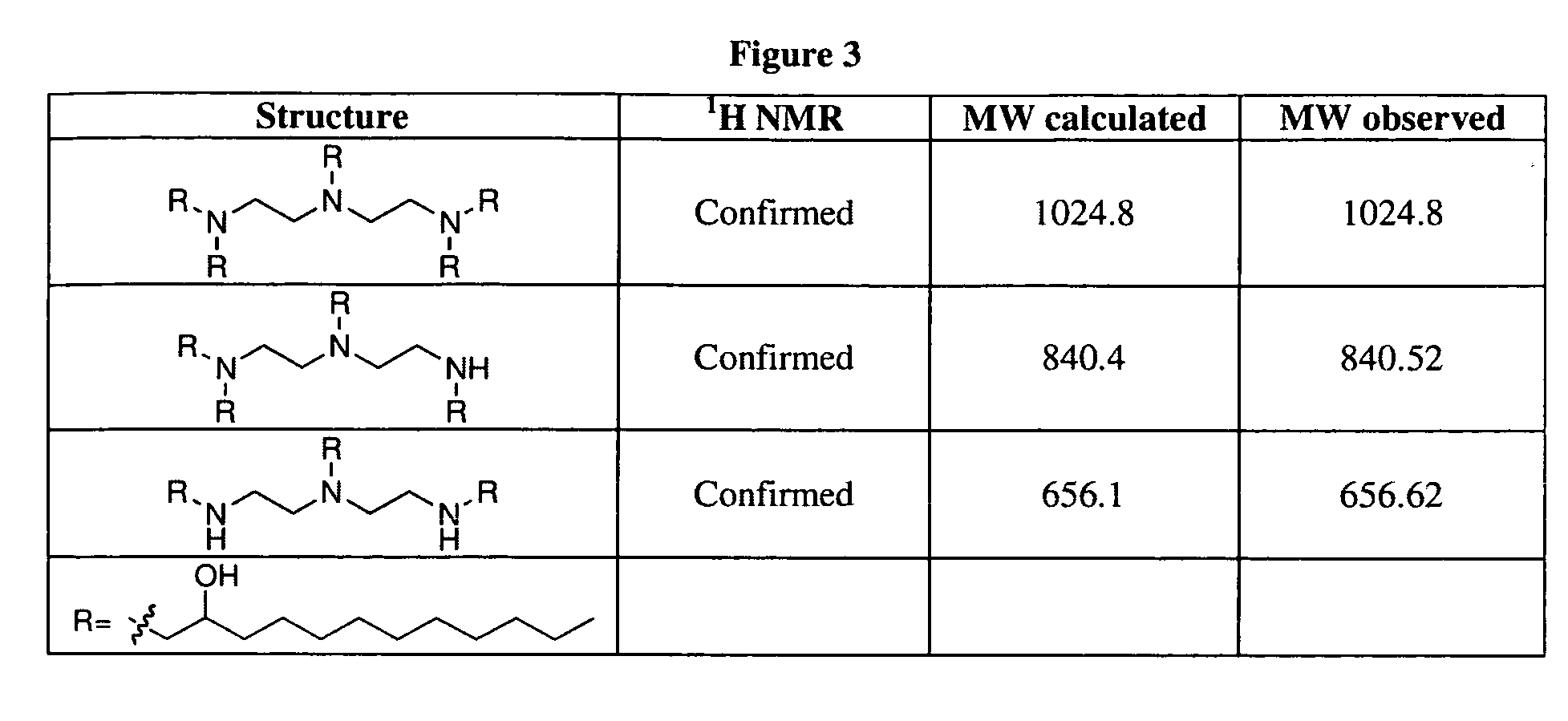Aminoalcohol lipidoids and uses thereof
a technology of aminoalcohol lipidoids and lipidoids, which is applied in the direction of liposomal delivery, peptide/protein ingredients, dna/rna fragmentation, etc., can solve the problems of reducing the effect of genetic therapy on the treatment of disease, affecting the effect of clinical trial participants, and the potency of genetic therapy for disease treatment has yet to be realized
- Summary
- Abstract
- Description
- Claims
- Application Information
AI Technical Summary
Benefits of technology
Problems solved by technology
Method used
Image
Examples
example 1
Synthesis and Characterization of 1,2-aminoalcohols
[0348]These lipidoids were synthesized by combining amines and epoxides in a glass vial equipped with a stirbar and heated to 90° C., as shown in FIG. 1. The amines chosen contain between two and five amine functionalities, while the epoxides are racemic, of varying chain lengths and feature unique functional groups and varying degrees of saturation (FIG. 2). The reaction times varied from 24-72 hours at this temperature. Mixtures generally remained clear throughout the reaction and became noticeably viscous as the reaction progressed. Upon cooling, many became waxy solids. The extent of the reaction could be controlled by the number of equivalents of epoxide added to the reaction mixture. For example, in the examples shown, amine 114 has a maximum of five points for substitution. Addition of five equivalents of epoxide would yield an amine core with five alkane chains linked by a 1,2-aminoalcohol. Addition of four equivalents of ep...
example 2
In Vitro Screening for RNA Delivery
[0350]Epoxide lipidoids were tested for their ability to deliver siRNA to a HeLa cell line that stably expresses both firefly and Renilla luciferase. Efficacy was determined by complexing the lipidoid with siRNA specific for firefly luciferase, adding this mixture to cells and measuring the subsequent ratio of firefly to Renilla expression. This procedure was performed in 96-well microtiter plates to enable high throughput testing of the materials. In this assay, reduction of both firefly and Renilla expression indicates toxicity, while reduction of only firefly expression is an indication of specific knockdown due to siRNA. Initial screening results of selected members of the library are shown in FIG. 5. Many members of this sampling showed some ability to transfect cells and give rise to some knockdown of firefly luciferase. Of these the best performers were generally lipidoids derived from epoxides of 14 carbons or longer coupled with monomers o...
example 3
RNA Encapsulation Efficiency
[0351]Formulation for in vitro experiments is a simple mixing of RNA with lipidoid at a set ratio in buffer prior to addition to cells. In vivo formulation requires the addition of extra ingredients to facilitate circulation throughout the body. To test the ability of these lipidoids to form particles suitable for in vivo work, we followed a standard formulation procedure utilized in the lab. These particles consisted of 42% lipidoid, 48% cholesterol and 10% PEG. After formation of the particle, RNA was added and allowed to integrate with the complex. The encapsulation efficiency was determined using a standard Ribogreen assay. As shown in the table below, these particles were on the order of 100 nm after extrusion, with some achieving encapsulation efficiency of over 90%.
Particle Size and Entrapment Efficiency of Selected Epoxide Lipidoids
[0352]
CompoundSize (nm)Entrapment (%)C14-120-B95.292.75C16-120-B128.467.22C14-98-B126.944.84C14-113-B92.796.42
PUM
 Login to View More
Login to View More Abstract
Description
Claims
Application Information
 Login to View More
Login to View More - R&D
- Intellectual Property
- Life Sciences
- Materials
- Tech Scout
- Unparalleled Data Quality
- Higher Quality Content
- 60% Fewer Hallucinations
Browse by: Latest US Patents, China's latest patents, Technical Efficacy Thesaurus, Application Domain, Technology Topic, Popular Technical Reports.
© 2025 PatSnap. All rights reserved.Legal|Privacy policy|Modern Slavery Act Transparency Statement|Sitemap|About US| Contact US: help@patsnap.com



